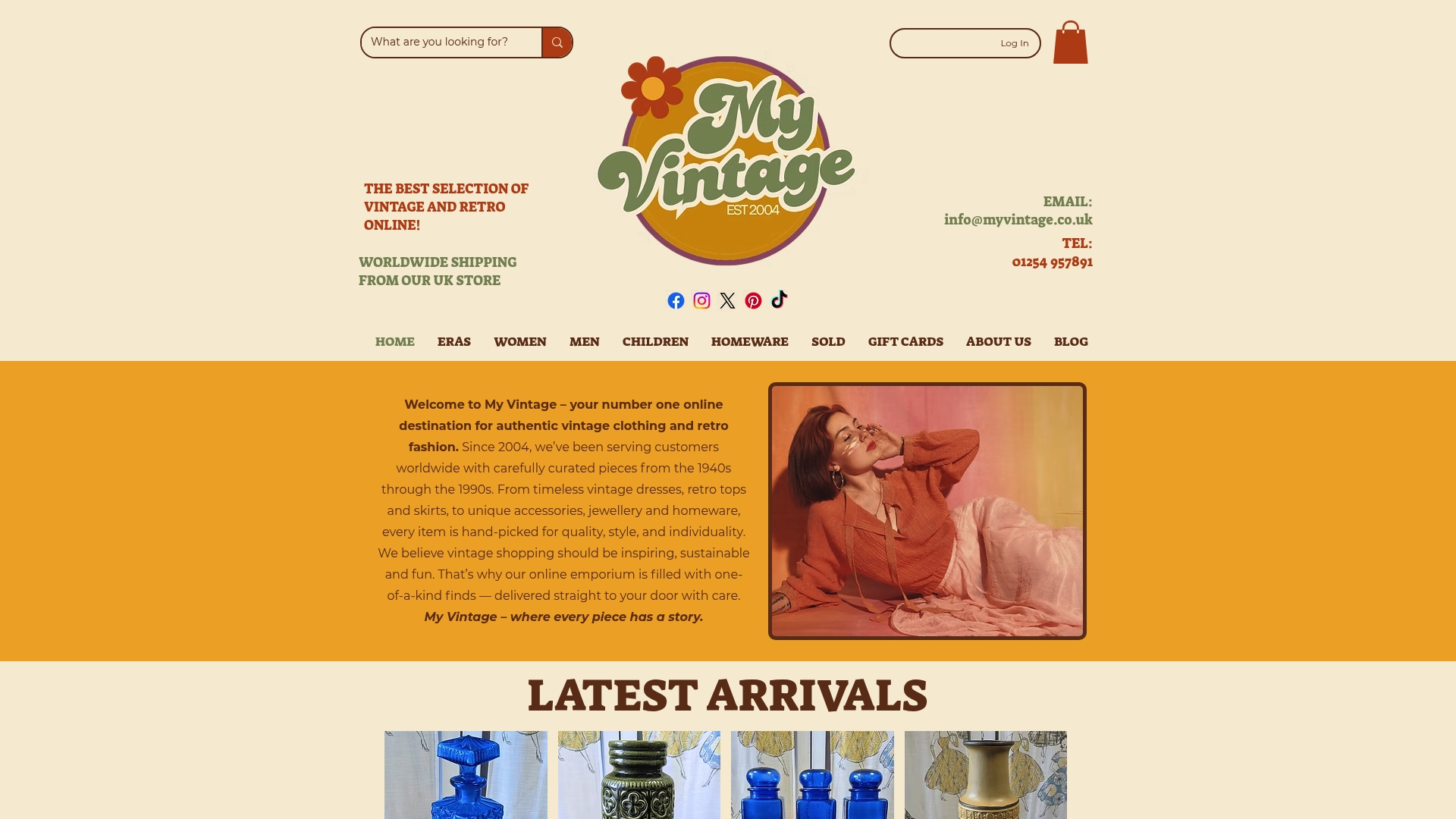The Benefits of Sustainable Vintage Fashion
- Emma

- Oct 8
- 7 min read

Sustainable fashion is shaking up the way we think about clothes and the impact of our wardrobes on the planet. Most people are shocked to learn that the fashion industry pumps out 2.1 billion tonnes of greenhouse gases every year, making up 4% of global emissions. Yet here is the real surprise. Choosing a better t-shirt might seem small but adopting sustainable fashion at scale could shrink negative environmental impacts by up to 75% and those numbers turn style choices into real power for change.
Table of Contents
Quick Summary
Takeaway | Explanation |
Sustainable fashion promotes ethical practices. | This approach ensures fair labour and safe conditions for workers throughout the fashion supply chain. |
Conscious consumption reduces environmental impact. | Choosing high-quality, durable clothing lessens waste and conserves resources, contributing to a healthier planet. |
Investing in sustainable fashion saves money. | Higher-quality garments lead to lower long-term costs by reducing the need for frequent replacements. |
Circular design principles enhance sustainability. | Designing clothes for durability and recyclability minimizes waste and reduces dependence on virgin materials. |
Consumer awareness drives industry change. | By making informed choices, consumers can significantly influence sustainable practices and promote ethical brands. |
What is Sustainable Fashion and Its Importance?
Sustainable fashion represents a transformative approach to clothing production and consumption that prioritises environmental responsibility, ethical manufacturing, and long-term social welfare. Explore our comprehensive guide on sustainable fashion choices to understand this crucial movement.
Defining Sustainable Fashion
Sustainable fashion goes beyond merely creating environmentally friendly garments. It encompasses a holistic strategy addressing the entire lifecycle of clothing, from raw material sourcing to production, distribution, usage, and eventual disposal. This approach challenges the traditional fast fashion model by focusing on:
Minimising environmental impact through responsible manufacturing
Ensuring fair labour practices and worker welfare
Promoting long-lasting, high-quality clothing designs
Reducing textile waste and carbon emissions
According to McKinsey & Company’s sustainability report, the fashion industry currently contributes approximately 2.1 billion tonnes of greenhouse gas emissions annually, representing 4% of global emissions.
The Social and Environmental Significance
Sustainable fashion represents more than an aesthetic choice it is a critical response to the environmental and social challenges posed by conventional textile production. By prioritising organic materials, ethical labour practices, and circular design principles, sustainable fashion aims to:
Protect natural ecosystems and biodiversity
Reduce water consumption and pollution
Support fair wage and safe working conditions for textile workers
Encourage consumer awareness about clothing’s true environmental cost
The global sustainable fashion market is projected to grow significantly, reflecting increasing consumer consciousness about environmental and ethical considerations in clothing production. Consumers are increasingly seeking transparency, understanding that every clothing purchase represents a potential contribution to positive environmental and social change.
Why Sustainable Fashion Matters for the Environment
Environmental sustainability in fashion represents a critical response to the massive ecological footprint created by traditional textile production. Learn about vintage clothing as a sustainable fashion alternative to understand how conscious consumer choices can drive meaningful change.
The Environmental Impact of Conventional Fashion
Traditional fashion production creates substantial environmental challenges that extend far beyond fabric manufacturing. According to United Nations Environment Programme, the textile industry generates more greenhouse gas emissions than international maritime shipping and international flights combined.
The environmental burden of conventional fashion includes:
Excessive water consumption during cotton and textile production
High chemical usage in fabric dyeing and treatment processes
Significant carbon emissions from global manufacturing and transportation
Massive textile waste ending up in landfills and oceans
Sustainable Fashion’s Ecological Solutions
Sustainable fashion offers comprehensive strategies to mitigate these environmental challenges by reimagining production processes. Key ecological interventions include:
Utilising recycled and regenerative materials
Implementing circular design principles
Reducing water and energy consumption
Minimising chemical and microplastic pollution
Research from the Ellen MacArthur Foundation suggests that transitioning to a circular textile economy could reduce negative environmental impacts by up to 75%, demonstrating the transformative potential of sustainable fashion practices.
Below is a comparison of conventional fashion and sustainable fashion approaches to highlight their differing environmental impacts and key practices.
Aspect | Conventional Fashion | Sustainable Fashion |
Greenhouse Gas Emissions | High (2.1 billion tonnes annually) | Potentially reduced by up to 75% |
Water Consumption | Excessive use during cotton production | Reduction through eco-friendly materials |
Chemical Usage | Significant in dyeing and treatment | Minimized with safer processes & choices |
Textile Waste | Large amounts end up in landfills | Focus on durability and recycling |
Material Sourcing | Primarily non-renewable, conventional | Recycled, organic, and regenerative fibres |
Labour Practices | Often lacking in transparency and safety | Strong emphasis on ethics and fair wages |
The Economic Benefits of Sustainable Fashion
Sustainable fashion transcends environmental concerns, offering significant economic advantages for businesses, consumers, and global markets. Discover the economic potential of thrifting and understand how conscious consumption drives financial innovation.
Creating Economic Value and Job Opportunities
The sustainable fashion sector represents a robust economic model that generates meaningful employment and drives innovation. According to McKinsey Global Institute, the circular fashion economy could unlock substantial economic potential, potentially creating millions of new jobs worldwide.
Key economic benefits include:
Generating employment in textile recycling and sustainable manufacturing
Fostering innovation in eco-friendly production technologies
Creating new business models focused on circular economy principles
Reducing long-term production costs through sustainable practices
Consumer Economic Advantages
Long-term financial savings emerge as a critical economic benefit of sustainable fashion. By investing in high-quality, durable clothing, consumers can reduce their overall clothing expenditure. The traditional fast fashion model encourages frequent replacements, whereas sustainable fashion promotes:
Higher quality garments with extended lifecycle
Lower total cost of ownership
Reduced clothing waste and replacement frequency
Enhanced wardrobe value through timeless design
Research from the Ellen MacArthur Foundation indicates that extending a garment’s active life by just nine months could reduce carbon, water, and waste footprints by 20-30%, simultaneously delivering significant economic benefits.
This table organises the core economic and consumer benefits of sustainable fashion as discussed in the content, clarifying their direct impact on individuals and the broader economy.
Benefit Area | Key Advantages |
Employment | Job creation in textile recycling and sustainable manufacturing |
Innovation | Fosters eco-friendly technologies and new business models |
Cost Savings | Lower total cost through high-quality, durable garments |
Waste Reduction | Decreases need for frequent clothing replacements |
Extended Garment Life | Prolongs active use, reducing carbon, water, and waste footprints |
Circular Economy | Reduces long-term production costs and virgin material use |

Cultural Impact and Consumer Responsibility in Fashion
Consumer choices in fashion have transformed from mere personal style statements to powerful mechanisms of social change. Explore the impact of vintage and thrifted fashion to understand how individual decisions can reshape global fashion narratives.
Shifting Cultural Perceptions
Sustainable fashion represents more than an ecological movement it is a profound cultural shift challenging traditional consumption patterns. According to Harvard Business Review, younger generations are increasingly viewing fashion as a form of social and environmental activism.
Key cultural transformations include:
Redefining personal style as an ethical statement
Challenging mass production and disposable clothing culture
Promoting transparency and accountability in fashion supply chains
Celebrating individual creativity over trend-driven consumption
Consumer Responsibility and Ethical Engagement
Conscious consumption has emerged as a critical cultural paradigm in fashion. Consumers are no longer passive recipients but active participants in driving systemic change. This shift involves:
Making informed purchasing decisions
Supporting brands with transparent and ethical practices
Valuing quality and longevity over short-term trends
Understanding the broader social and environmental implications of clothing choices
Research from the Global Fashion Agenda suggests that consumer awareness and collective action can significantly accelerate sustainable fashion’s mainstream adoption, transforming individual choices into a powerful collective movement.
How Sustainable Fashion Works in Practice
Sustainable fashion translates theoretical principles into tangible, actionable strategies that revolutionise textile production and consumption. Discover vintage clothing as a practical sustainable fashion solution to understand real-world implementation.
Material Selection and Sourcing
The foundation of sustainable fashion lies in conscientious material selection. According to Textile Exchange, innovative approaches to fabric sourcing dramatically reduce environmental impact by prioritising:
Organic and regenerative natural fibres
Recycled synthetic materials
Low-water consumption textile production
Biodegradable and compostable fabric alternatives
Circular Design and Production Principles
Circular design represents a transformative approach in sustainable fashion, moving beyond traditional linear production models. This methodology focuses on creating garments that can be:
Easily repaired and maintained
Designed for disassembly and recycling
Produced using minimal waste techniques
Created with long-term durability in mind
Research from the Ellen MacArthur Foundation demonstrates that implementing circular design principles could reduce virgin material usage by up to 70%, creating a more resilient and environmentally responsible fashion ecosystem.
Take Real Steps Towards Sustainable Fashion Today
You have learned how sustainable fashion can protect the planet and bring lasting value to your wardrobe by rejecting fast fashion, reducing waste, and supporting ethical production. Finding truly authentic and responsibly sourced clothing, however, can often feel overwhelming or uncertain. If you are looking for real solutions to these challenges, My Vintage is here to make sustainable choices simple and inspiring.

At My Vintage, you will discover a carefully curated range of vintage clothing and retro homeware, each piece selected for its quality, individuality, and eco-friendly appeal. Our collection brings you genuine vintage apparel from the 1940s to the 1990s, crafted to stand the test of time and keep you stylish while minimising your environmental impact. Ready to make your wardrobe both unique and planet-friendly? Visit My Vintage now to browse our latest finds, update your look with a clear conscience, and become part of the growing movement for positive fashion change. If you would like practical ideas for how vintage clothing can be your own sustainable choice, read our feature on vintage clothing as the ultimate sustainable fashion choice.
Frequently Asked Questions
What is sustainable fashion?
Sustainable fashion refers to a clothing production and consumption approach that prioritises environmental responsibility, ethical manufacturing, and social welfare. It addresses the full lifecycle of clothing, from raw material sourcing to disposal.
Why is sustainable fashion important for the environment?
Sustainable fashion is crucial as it helps mitigate the ecological footprint created by conventional textile production, reducing water consumption, carbon emissions, and textile waste while promoting the use of eco-friendly materials and practices.
What are the economic benefits of sustainable fashion?
Sustainable fashion offers significant economic advantages, including job creation in sustainable manufacturing, innovation in eco-friendly production technologies, and long-term cost savings for consumers through durable, high-quality garments.
How can consumers practice sustainable fashion?
Consumers can practice sustainable fashion by making informed purchasing decisions, supporting brands with ethical practices, valuing quality over trends, and considering the environmental impact of their clothing choices.
Recommended








Comments